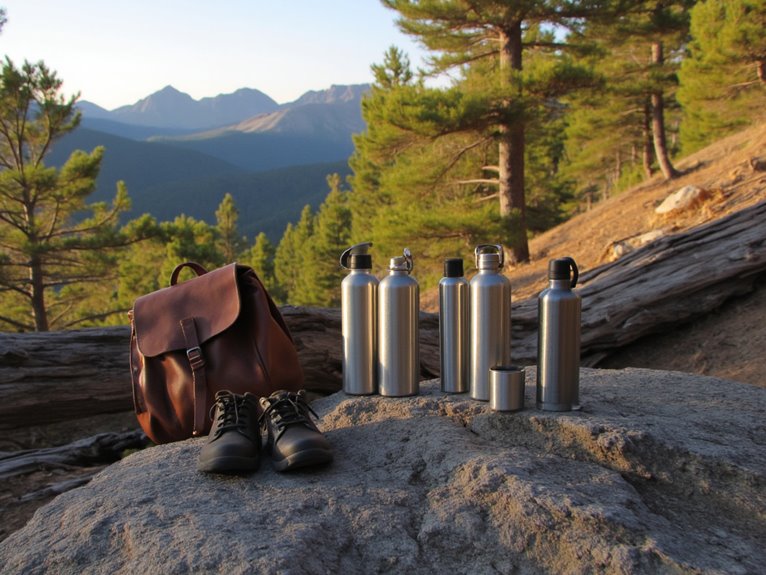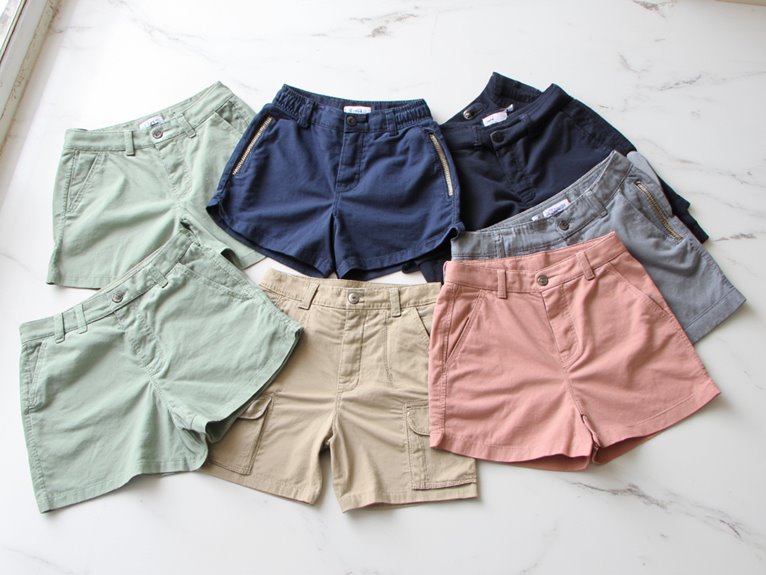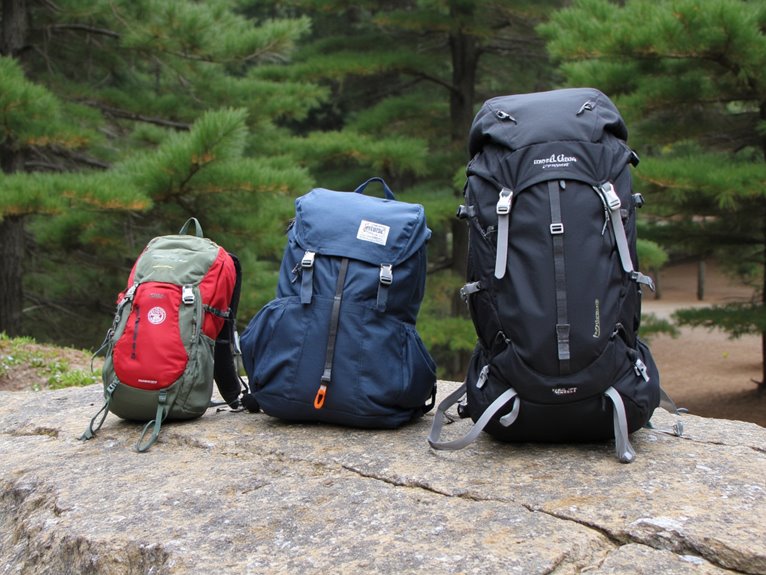Can I Use Nikwax on a Backpack?
Nikwax offers a range of products that can be safely used on backpacks to provide durable water repellency while maintaining breathability and flexibility. However, it's essential to understand the compatibility of Nikwax with the backpack's material and follow proper application to avoid damage or discoloration. Improper application or incompatible materials can compromise the integrity of the fabric. By choosing the right Nikwax product and following application guidelines, you can ensure your backpack remains lightweight, dry, and comfortable in wet conditions. To ensure optimal performance, it's crucial to consider the nuances of your backpack's material and Nikwax treatment.
We are supported by our audience. When you purchase through links on our site, we may earn an affiliate commission, at no extra cost for you. Learn more. Last update on 26th December 2025 / Images from Amazon Product Advertising API.
Understanding Nikwax and Its Uses
Nikwax, a renowned waterproofing brand, offers a range of products specifically designed to protect and improve the performance of outdoor gear, including backpacks.
These products are formulated to provide durable water repellency, while maintaining breathability and flexibility.
Nikwax treatments can be applied to new gear to prevent water absorption, or to restore water resistance in worn or damaged items.
By using Nikwax, outdoor enthusiasts can guarantee their backpacks remain lightweight, dry, and comfortable, even in wet conditions.
This enables users to focus on their adventure, rather than worrying about gear performance.
With Nikwax, backpackers can trust their gear to perform consistently, no matter the weather, and have confidence that it will keep them protected.
Backpack Materials and Water Resistance
Backpacks constructed from various materials, including nylon, polyester, and canvas, exhibit distinct water resistance properties that significantly impact their performance in wet conditions.
Nylon, for instance, is generally more water-resistant than polyester, while canvas is more prone to water absorption.
Understanding the water resistance properties of your backpack's material is vital when considering the use of Nikwax or similar treatments.
Some materials may require additional protection to maintain their performance, while others may not benefit from additional treatments.
Recognizing the strengths and weaknesses of your backpack's material will help you make informed decisions about its maintenance and care.
Can Nikwax Damage My Backpack?
When applying Nikwax to a backpack, crucial attention must be paid to the potential risks of damage.
Incompatible materials can react adversely to Nikwax, compromising the integrity of the backpack's fabric.
Additionally, improper application can also undermine the water resistance of the backpack, rendering it less effective in wet conditions.
Material Compatibility Issues
Incompatible materials can react adversely to Nikwax treatments, which is why it's essential to verify the water repellent is compatible with your backpack's fabric.
Nikwax can damage certain materials, such as acrylic, polyester, or nylon with waterproof coatings, by breaking down the fabric's water-repellent properties.
Always check the manufacturer's recommendations for treatment, and test a small, inconspicuous area first.
Some materials, like leather or suede, may require special care or alternative treatments.
Verify the compatibility of Nikwax with your backpack's fabric to avoid damage or discoloration.
Water Resistance Compromised
While Nikwax is generally a reliable water repellent treatment, its improper application or use on incompatible materials can compromise the water resistance of your backpack.
This can lead to water seeping into the fabric, causing damage and reducing the backpack's overall performance.
Some common scenarios that may compromise water resistance include:
- Using Nikwax on non-breathable or waterproof materials
- Applying Nikwax to dirty or contaminated fabric
- Failing to follow the recommended application instructions
- Using Nikwax on materials that are not compatible with the treatment
- Over-saturating the fabric with Nikwax, leading to a sticky residue
Alternative Waterproofing Options
While Nikwax is a popular choice for waterproofing backpacks, there are alternative options available for those seeking different benefits or characteristics.
Silicone-based treatments, for example, offer a non-fluorinated alternative, while water repellent coatings provide a more temporary solution.
Additionally, eco-friendly alternatives are emerging, catering to consumers prioritizing environmental sustainability in their gear care routine.
Silicone-Based Treatments
Silicone-based treatments, such as SilNet or Scotchgard, offer a viable alternative to Nikwax for backpack waterproofing, providing a durable barrier against water and stains. These treatments are easy to apply and can be used on a variety of fabrics, including nylon, polyester, and cotton.
Some key benefits of silicone-based treatments include:
- Easy to apply and reapply as needed
- Provide long-lasting water repellency
- Safe to use on a wide range of fabrics
- Can be used on both new and pre-treated gear
- Generally less expensive than Nikwax
Water Repellent Coatings
Water repellent coatings, a diverse range of alternative waterproofing options, offer backpackers a broader spectrum of choices for protecting their gear from the elements.
These coatings can be applied to specific areas of the backpack, such as the seams, zippers, or fabric, to boost water resistance.
Some popular water repellent coatings include polyurethane, polyethylene, and fluorine-based treatments.
These coatings can be applied using various methods, including spraying, brushing, or immersion.
When choosing a water repellent coating, consider factors such as durability, breathability, and UV resistance to guarantee peak performance.
Eco-Friendly Alternatives
Environmentally conscious backpackers can now opt for eco-friendly alternatives to traditional waterproofing methods, including plant-based treatments and biodegradable coatings that provide effective protection without harming the environment.
These alternatives not only reduce the environmental impact but also offer a safer choice for users.
Some popular eco-friendly options include:
Beeswax-based coatings: A natural, non-toxic, and biodegradable option that provides excellent water resistance.
Plant-based waterproofing sprays: Derived from natural sources such as soy or corn, these sprays offer a sustainable alternative to traditional chemicals.
Biodegradable silicone coatings: A durable and eco-friendly option that breaks down naturally in the environment.
Wax-based treatments: A blend of natural waxes that provide long-lasting water resistance without harming the environment.
Natural oils and waxes blends: A combination of natural oils and waxes that offer a sustainable and effective waterproofing solution.
Proper Care and Maintenance Tips
To maintain your backpack's prime condition, regular cleaning and conditioning with Nikwax is vital, as it helps prevent damage from dirt, UV rays, and abrasion.
A gentle cleaning routine involving a soft-bristled brush and mild soap can remove dirt and debris.
Allow the backpack to air-dry, avoiding direct sunlight and heat.
Regular Nikwax treatments can then be applied to maintain water resistance and prevent fabric degradation.
Additionally, storing your backpack in a cool, dry place, away from direct sunlight, can help prolong its lifespan.
Regular inspections can also help identify and address any damage or wear early on, guaranteeing your backpack remains in excellent condition for your next adventure.
Making an Informed Decision
When selecting a Nikwax product for your backpack, consider the type of fabric, level of soiling, and desired level of water resistance to guarantee the most effective treatment. This informed approach certifies you choose the right product for your backpack's specific needs.
To make a well-informed decision, consider the following factors:
- Fabric type: Different Nikwax products are designed for specific fabrics, such as cotton, nylon, or synthetic blends.
- Level of soiling: Lightly soiled backpacks require a gentler treatment, while heavily soiled ones need a more intense cleaning product.
- Desired water resistance: Choose a Nikwax product that provides the level of water resistance you need, from basic to extreme.
- Backpack age and condition: Older or worn-out backpacks may require special care and attention.
- Environmental factors: Consider the climate and environment where you'll be using your backpack to determine the level of water resistance needed.




